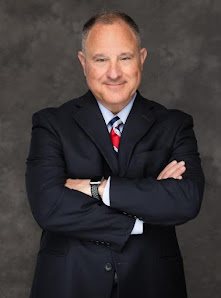Forensic genealogy can best be described as a
still-nascent technique of forensic science that combines DNA analysis and
family-tree building, reported Topic. (The TV pitch would be a cross between the documentary
series Forensic Files and Who Do You Think You Are?, in which celebrities
explore their family trees.) Its specific alchemy results when the field of
genetic genealogy—which uses DNA testing to help people discover and identify
their ancestors—is applied to legal and investigative issues, like the tracking
down of missing heirs, adoptive parents, and siblings, the assigning of names
to the unidentified remains of soldiers, and now the cracking of cold cases.
“You always hear the phrase ‘hiding in plain view.’
That’s what this guy was doing.”
It is also a specialty of Parabon NanoLabs, which
has successfully identified more than 30 suspects in cold cases since May 2018,
establishing itself as the go-to service for forensic genealogy. The company
was originally founded in 2008 by computational scientist Steven Armentrout and
chemist Michael Norton to develop products for analyzing the tiniest amounts of
DNA and applying them in cancer research, developing new vaccines, and creating
novel synthetic drugs. The Department of Defense had funded the initial
research that became Snapshot; law enforcement requests came later, with the
Fort Wayne police becoming one of Parabon’s earliest clients in 2015.
When I studied forensic science at John Jay College
of Criminal Justice in the early 2000s, I toiled—with mixed results, at best—on
DNA research that convinced me I was better off far away from the laboratory,
writing about crimes rather than solving them. As DNA testing became more
sophisticated, gleaning results from microscopic samples that were once thought
untestable, I got excited at the possible ramifications with respect to cold
cases both famous (Zodiac Killer, anyone?) and unknown.
What also stands out about the rapid rise of
forensic genealogy is that the work was, for years, the domain of amateur
genealogists. These genealogists toil in archives and databases first for
themselves, then for others who enlist their help to solve mysteries and
unknowns in their family trees.
Only a handful of these genealogists, however, have
the requisite expertise and background needed to resolve cold cases like those
that Parabon takes on. Colleen Fitzpatrick, a 63-year-old physicist who coined
the term “forensic genealogy” in the mid-2000s, is one of these experts.
Fitzpatrick concentrates almost exclusively on unidentified remains, and she
most recently cofounded
the DNA Doe Project with amateur genealogist Margaret Press. So, too, is
Barbara Rae-Venter, 70, the California-based genetic genealogist who worked
with the FBI and with various divisions of state law enforcement to pinpoint
the identity of the Golden State Killer. (Neither genealogist has worked with
Parabon.)
To read more CLICK HERE








No comments:
Post a Comment